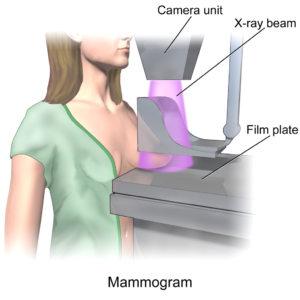Mononucleosis or Kissing Disease – one of the most contagious infection among teenager

By Neucrad Health Desk February 14, 2022
Mononucleosis, often referred to as “mono” or the “kissing disease,” is an infectious medical condition caused by the Epstein-Barr virus. It is the same pathogen which is responsible for the development of herpes. Though the disease is not life-threatening, it may often lead to a severe outbreak of symptoms preventing individuals from engaging in normal social activities for weeks. Teenagers within the age group 15-17 years are more prone to this infection than children or aged individuals.
How Common is Mononucleosis?
Mononucleosis is a widespread viral infection, and approximately 85 to 90 per cent adults in America have shown the presence of antibodies against the Epstein-Barr virus before they 40 years old. It concludes that they were infected with the virus at a particular stage in their life. According to the Centers for Disease Control and Prevention, mono frequently occurs (25 percent of the time) among young adults than in children or aged individuals. Studies also reveal that symptoms are more prominent among high school or college students. In the case of children, signs and symptoms may be non-existent, or it may be so mild that the infection may often go unrecognized.
How Does Mononucleosis Spread from One Person to Another?
In most cases, mononucleosis spread from infected to healthy individuals through contact with mucus or saliva. The virus usually spread while kissing, and it is the reason the disease got the name “kissing disease.” However, there are also reports of acquiring the infection through contact with a cough or sneezing droplets, or by sharing food or tableware with infected patients. It may spread at any time of the year, but people are at higher risk of getting infected during the cold and flu season. The incubation period of the pathogen is approximately four to eight weeks, so patients manifest symptoms after a long period of coming in contact with the Epstein-Barr virus.

Symptoms of Mononucleosis
Signs and symptoms of mono last for an extended duration, and in many instances, individuals complain of discomfort for as long as two months. Detailed below are the common symptoms of the infection.
∙ Fever
∙ Sore throat
∙ Swollen lymph glands especially at the neck or armpits
∙ Skin rash
∙ White patches may develop in the throat
∙ Fatigue
∙ Headache
∙ Night Sweats
∙ General body weakness
∙ Splenomegaly (Enlargement of the spleen)
Diagnosis of Mononucleosis
Diagnosis of mononucleosis infection is essential for ruling out other infective condition and curing secondary infections. Here are some of the tests which doctors prescribe for the detection of the disease.
∙ Physical Examination
When the doctor suspects mono infection he looks for other associated symptoms including fever, swollen tonsils and lymph nodes and enlargement of liver or spleen.
∙ Complete Blood Count
Complete blood count gives the number of different types of blood cells including red blood cells, white blood cells, and platelets. The elevated number of white blood cells along with associated symptoms suggest a possibility of mononucleosis infection.
∙ Monospot Test
Monospot test checks the presence of antibodies to the Epstein-Barr virus in the blood sample. It is also known as the heterophile test. The test result becomes more consistent after two to four weeks of the appearance of mono symptoms. At this stage, the blood has sufficient antibodies to give a confirmative report.
Treatment of Mononucleosis
Since a virus causes mononucleosis, there is no specific therapy to treat the infection. Antibiotics are not effective against the pathogen; doctors prescribe them only when they suspect any secondary bacterial infection. In most cases, drinking plenty of fluids, consuming healthy diets, and adequate rest helps in healing from mononucleosis infection.
Are there any possibilities of Complications of Mononucleosis?
There are chances of some severe complications of mononucleosis. In some instances, affected individuals show enlargement of spleen or liver due to the viral infection. In extreme cases, it may also lead to spleen rupture causing excruciating pain in the left side of the upper abdomen. Other less common complications include jaundice, anaemia, or thrombocytopenia (low platelet count).
Are there any ways of Preventing Mononucleosis?
Epstein-Barr virus, the pathogen for mononucleosis mostly spread through the saliva of infected people. Refraining from kissing, sharing food or utensils helps in limiting the spread of the virus. Healthy individuals should also wash their hands properly before having food and not sharing personal belongings.
Finally, we can say that mononucleosis infection can last for weeks, so it is essential to take enough rest and be patient with the body while having the disease.










